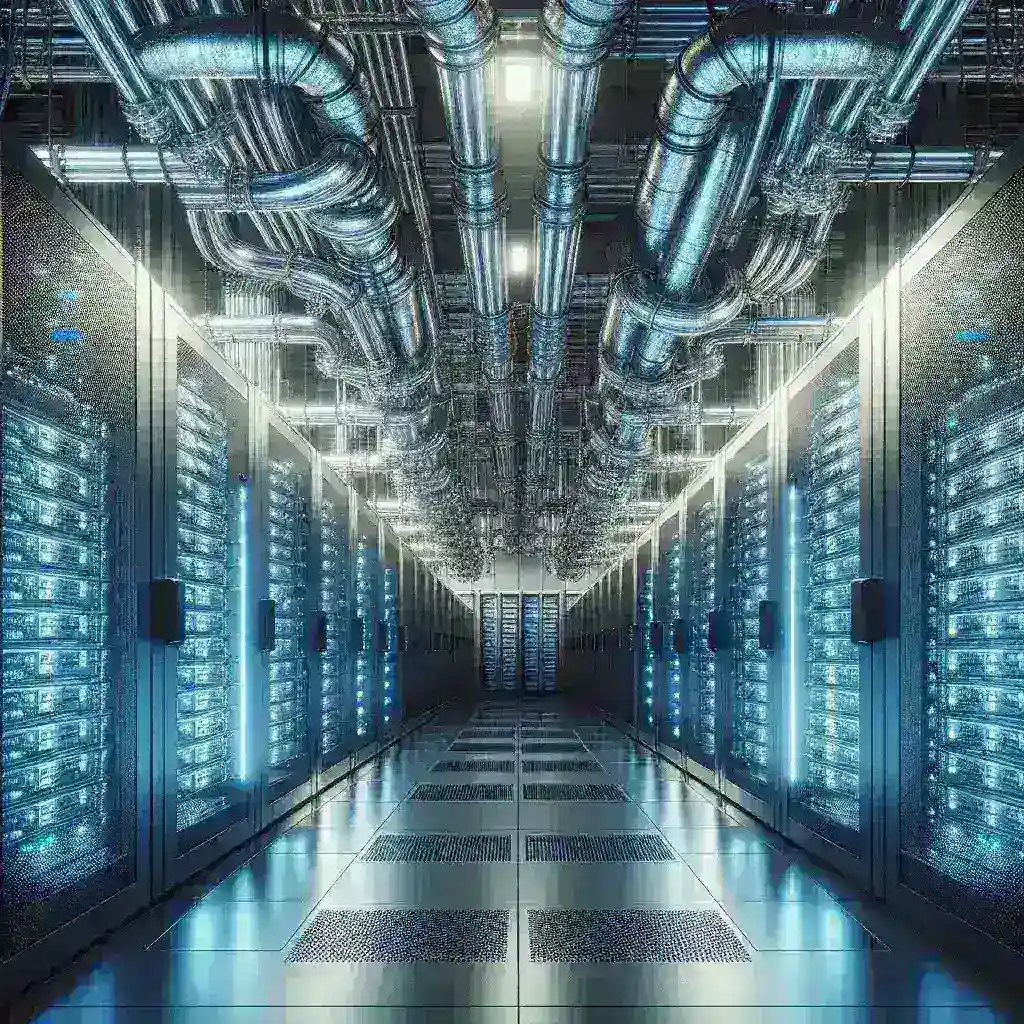Introduction
In an era where digital transformation is accelerating at breakneck speed, the demand for efficient and sustainable data centers has never been higher. Google, a leader in technological innovation, has taken significant strides in this domain by implementing water-cooled data centers. These facilities not only cater to the increasing need for computing power but also set energy benchmarks that the industry aspires to meet.
The Concept of Water Cooling
Water cooling is an energy-efficient method that utilizes water as a heat transfer medium to cool down servers. Unlike traditional air cooling methods, which require large amounts of electricity to operate fans and air conditioning units, water cooling harnesses the thermal properties of water to efficiently absorb and dissipate heat. This paradigm shift is not only ingenious but promises substantial savings in energy consumption.
How Google Implements Water Cooling
Google’s water-cooled data centers utilize a combination of cutting-edge technologies and engineering principles to maintain optimal operating temperatures. Here’s a closer look at the systems in place:
- Direct-to-Chip Cooling: This approach involves circulating water directly to the components of the server that generate the most heat, allowing for efficient heat absorption.
- Chilled Water Systems: These systems use a centralized chiller to cool water, which is then circulated through pipes to various parts of the data center.
- Evaporative Cooling: By utilizing the cooling effect of evaporating water, Google reduces the need for energy-intensive air conditioning.
Energy Efficiency and Sustainability
Google’s commitment to sustainability is reflected in its data center designs, which aim to minimize environmental impact. The water cooling systems are part of a broader strategy to achieve a Power Usage Effectiveness (PUE) of 1.1 or lower. PUE is a metric that measures how efficiently a data center uses energy; a lower PUE indicates better efficiency. Here are some key benefits of Google’s approach:
- Reduced Energy Consumption: Water cooling systems significantly reduce the amount of energy required for cooling, leading to lower operational costs and reduced carbon emissions.
- Increased Server Density: With effective cooling, servers can operate at higher capacities without overheating, allowing for more efficient use of physical space.
- Lower Water Usage: Surprisingly, water-cooled systems can actually use less water than traditional air-cooled systems by optimizing cooling cycles and minimizing evaporation.
Historical Context: The Evolution of Data Center Cooling
To understand the significance of Google’s water-cooled data centers, it is essential to consider the historical context of data center cooling solutions. In the early days of computing, simple air conditioning systems were sufficient for cooling hardware. However, as server farms expanded in size and complexity, conventional cooling methods began to falter, leading to increased energy costs and inefficiencies.
The Shift to Efficiency
Recognizing the urgent need for change, tech giants like Google began investing in research and development for more effective cooling techniques. The rise of cloud computing further exacerbated the demand for energy-efficient data management solutions, propelling water cooling into the spotlight. By championing this innovative technology, Google has paved the way for future advancements.
Future Predictions: What Lies Ahead?
As the global reliance on technology continues to grow, the future of data center cooling will likely be dominated by sustainable practices and innovations. Google’s water-cooled facilities are setting a precedent for the industry, influencing competitors and regulators alike. Here are some predictions for the future of data center cooling:
- Increased Adoption of Water Cooling: As more organizations seek to reduce their carbon footprints, the adoption of water cooling solutions will likely increase.
- Integration of AI and IoT: Smart technologies will enhance the efficiency of cooling systems, allowing for real-time monitoring and adjustments based on server loads and environmental conditions.
- Focus on Renewable Energy: Data centers will increasingly look to power their operations using renewable energy sources, further enhancing sustainability.
Pros and Cons of Water Cooling Systems
Pros:
- Energy Efficient: Water cooling systems consume significantly less energy compared to traditional methods.
- Enhanced Performance: Lower temperatures lead to improved server performance and longevity.
- Space Saving: Reduced reliance on bulky air conditioning units frees up valuable data center space.
Cons:
- Initial Costs: The upfront investment for implementing water cooling systems can be substantial.
- Maintenance Requirements: Water systems require careful monitoring to prevent leaks and corrosion.
- Complex Infrastructure: Designing and implementing an effective water cooling system can be complex and requires skilled personnel.
Real-World Examples
While Google leads the way, other companies are also exploring water cooling technologies. For instance:
- Facebook: They have invested in similar cooling technologies and have reported success in reducing energy consumption.
- Microsoft: Their underwater data center initiatives showcase innovative cooling solutions and environmental commitment.
Conclusion
Google’s water-cooled data centers are not just a technological achievement; they are a beacon of sustainability and efficiency in an ever-growing digital landscape. By setting energy benchmarks, Google is leading the charge for a cleaner, more efficient future in data management. As the industry evolves, the lessons learned from Google’s innovations will undoubtedly shape the landscape of data center technology for years to come.
